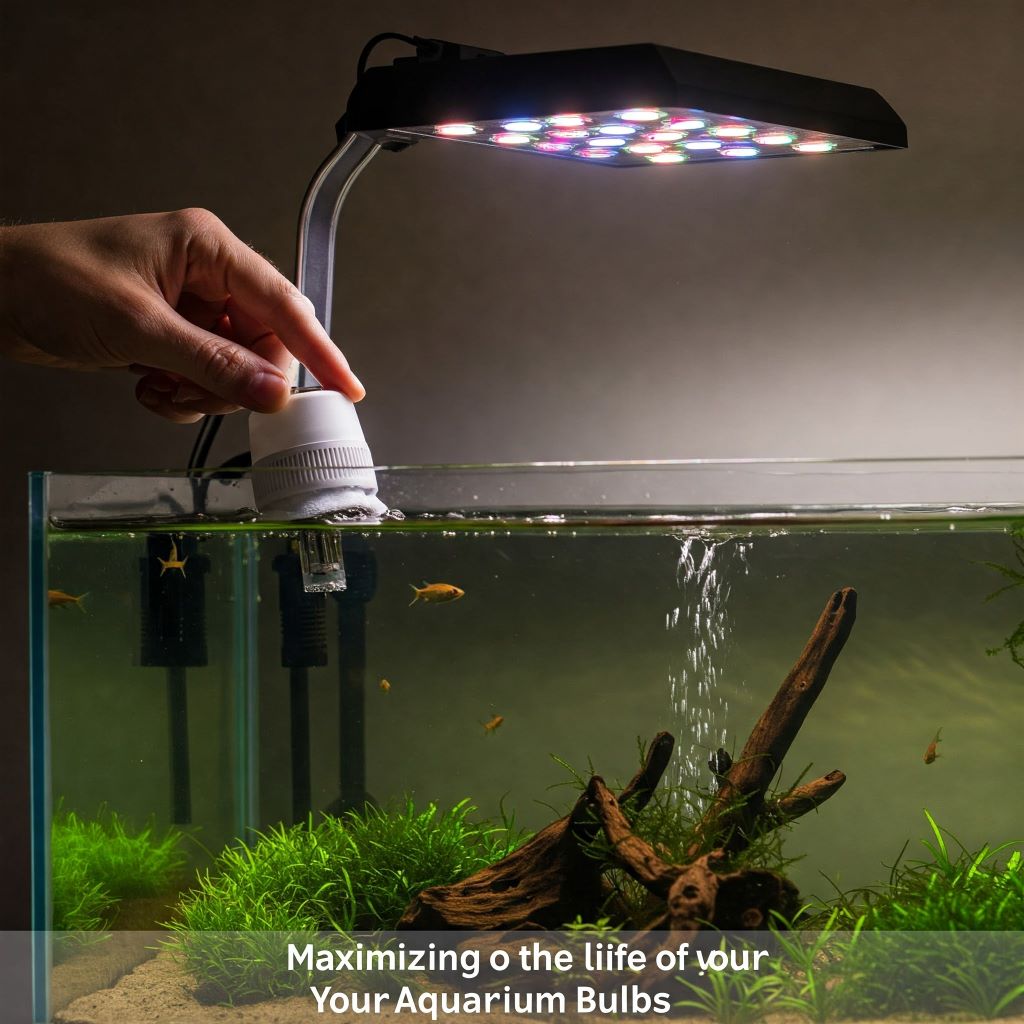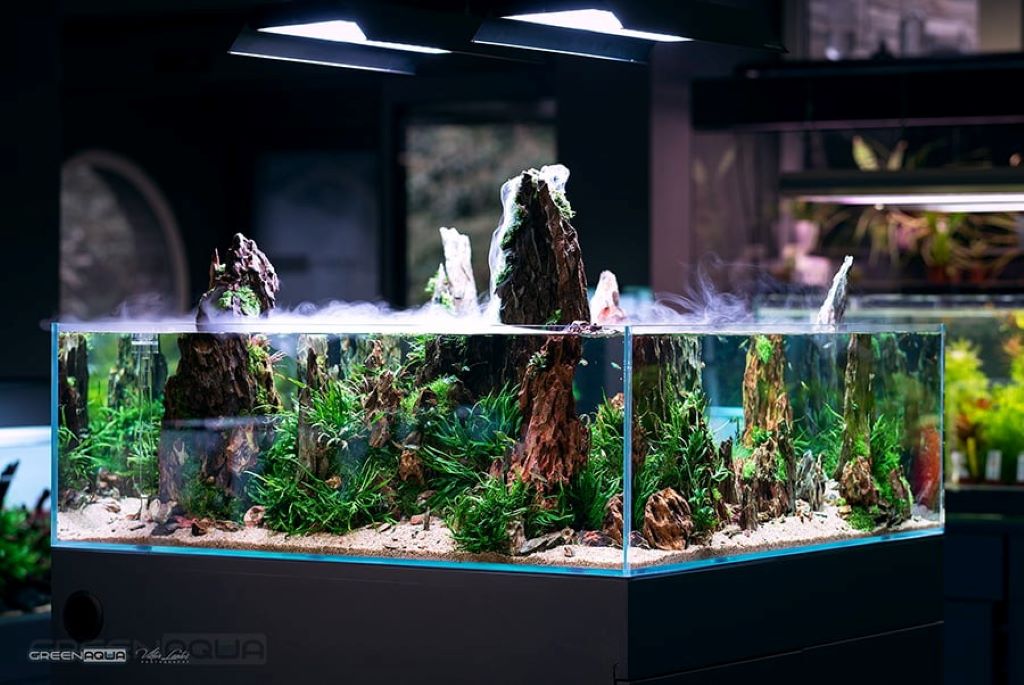The mesmerizing glow of an aquarium, the vibrant colors of fish darting through lush greenery, and the gentle shimmer of bubbles rising to the surface – it’s a captivating scene that brings a touch of the underwater world into our homes. But this aquatic tableau relies heavily on proper lighting, not just for aesthetics, but for the overall health and well-being of the inhabitants within. Maximizing the life of aquarium bulbs ensures that the lighting remains consistent and effective, supporting both the visual appeal and the biological needs of the ecosystem.
Aquarium lighting, however, is not a “set it and forget it” affair. Like any electrical component, aquarium light bulbs have a limited lifespan. Understanding the factors that influence their longevity and implementing simple maintenance practices can significantly extend their life, saving you money and ensuring your aquatic haven remains vibrant and thriving.
The Burning Question: Why Do Aquarium Lights Burn Out?
Before we delve into the “how-to” of prolonging the life of your aquarium lights, it’s essential to understand why they burn out in the first place. Several factors contribute to the gradual decline and eventual demise of these illuminating essentials:
- Heat: Excessive heat is a primary culprit. Traditional incandescent bulbs generate a significant amount of heat, which can accelerate the deterioration of the filament. While less prevalent in the aquarium hobby now, if you’re still using incandescent bulbs, the heat generated can also negatively impact the water temperature in your tank.
- Usage: The more you use your lights, the faster they will wear out. This is a simple matter of wear and tear. While consistent lighting is crucial for a healthy aquarium, sticking to a regular light cycle and avoiding unnecessarily long illumination periods can help.
- Power Surges: Sudden spikes in voltage can damage the delicate components of your lighting system, leading to premature failure. Using a surge protector can safeguard your equipment from these electrical fluctuations.
- Moisture and Humidity: The environment surrounding your aquarium is inherently humid. Over time, moisture can seep into the fixture and damage the electrical components. Ensuring proper ventilation and avoiding splashing water directly onto the lights are essential preventive measures.
- Bulb Type: Different types of aquarium lighting have varying lifespans. Generally, LEDs have the longest lifespan, followed by fluorescent bulbs, with incandescent bulbs having the shortest.
Illuminating the Options: Types of Aquarium Lighting and Their Lifespans
Choosing the right type of lighting for your aquarium plays a crucial role in its longevity and the well-being of your aquatic life. Here’s a breakdown of the most common types:
- LED Lights: The reigning champion of aquarium lighting, LEDs (Light Emitting Diodes) are energy-efficient, produce minimal heat, and boast an impressive lifespan, often exceeding 50,000 hours. Their versatility allows for customization, with options for color temperature and intensity control.
- Fluorescent Lights: Once the standard in aquarium lighting, fluorescent bulbs are still a popular choice. They offer good energy efficiency and provide a wider light spread compared to LEDs. However, they have a shorter lifespan, typically around 10,000-20,000 hours, and require periodic replacement of the ballast.
- Incandescent Lights: Rarely used in modern aquariums, incandescent bulbs are the least efficient and have the shortest lifespan. They generate significant heat and offer limited color spectrum options.
Extending the Glow: Practical Tips to Prolong Aquarium Bulb Life

Implementing these simple yet effective measures can significantly extend the life of your aquarium lights and ensure your underwater world remains beautifully illuminated:
-
Optimize Your Lighting Schedule:
- Establish a Consistent Photoperiod: Just like us, fish and plants thrive on a regular day-night cycle. Maintain a consistent lighting schedule, typically 8-10 hours per day for a planted tank and 10-12 hours for a fish-only tank. Avoid leaving the lights on for extended periods, as this can lead to algae overgrowth and shorten bulb life.
- Utilize Timers: Invest in an automatic timer to ensure your lights switch on and off at the same time each day, even when you’re away. This eliminates the risk of accidentally leaving the lights on for too long.
-
Maintain Optimal Operating Conditions:
- Keep it Cool: Excessive heat is the enemy of bulb longevity. Ensure your lighting fixture has adequate ventilation to dissipate heat. For aquariums with lids, choose fixtures designed to minimize heat buildup.
- Control Moisture: Prevent water from splashing onto the lights or fixture. Use a canopy or hood to minimize moisture exposure. Regularly wipe down the fixture to remove any condensation.
-
Regular Cleaning and Maintenance:
- Dust Off the Bulbs: Dust accumulation on the bulbs can reduce light output and contribute to heat buildup. Regularly clean the bulbs with a soft, dry cloth.
- Inspect the Fixture: Periodically check the fixture for signs of wear and tear, such as loose connections or corrosion. Address any issues promptly to prevent further damage.
-
Choose Quality Bulbs and Fixtures:
- Invest in Quality: While higher-quality bulbs and fixtures may have a higher upfront cost, they often offer better performance, longer lifespans, and greater energy efficiency in the long run.
- Select the Right Bulb: Choose bulbs specifically designed for aquarium use. These bulbs provide the appropriate spectrum of light for optimal plant growth and fish health.
-
Consider a Surge Protector:
- Safeguard Your Investment: Power surges can damage your lighting system. A surge protector acts as a buffer, absorbing excess voltage and protecting your equipment.
FAQ: Illuminating Your Concerns About Aquarium Lighting
-
How often should I replace my aquarium light bulbs?
The lifespan of aquarium bulbs varies depending on the type of bulb and usage.
- LEDs: Can last 50,000 hours or more, often 10+ years with regular use.
- Fluorescents: Need replacing every 10,000-20,000 hours, roughly every 1-2 years.
- Incandescents: Have the shortest lifespan, requiring replacement every few months.
-
Can I use regular household bulbs for my aquarium?
It’s not recommended to use regular household bulbs for your aquarium. They often lack the specific spectrum of light required for healthy plant growth and fish health. Additionally, they may generate excessive heat, which can negatively impact the water temperature.
-
How do I know if my aquarium light bulb needs replacing?
Look for these signs:
- Dimming Light: If the light appears dimmer than usual, even after cleaning, the bulb may be nearing the end of its life.
- Flickering: A flickering light indicates a problem with the bulb or the fixture.
- Color Changes: If the light color appears different or distorted, the bulb may be failing.
- Bulb Discoloration: Darkening or discoloration of the bulb itself can signify its age.
-
What is PAR, and why is it important?
PAR (Photosynthetically Active Radiation) measures the amount of light available for photosynthesis. Choosing bulbs with appropriate PAR values is crucial for healthy plant growth in planted aquariums.
-
What is Kelvin, and how does it affect my aquarium?
Kelvin measures the color temperature of light. Higher Kelvin ratings (6500K-10000K) emit a cooler, bluish light, mimicking daylight and promoting plant growth. Lower Kelvin ratings (2700K-3000K) produce a warmer, yellowish light, often used in fish-only tanks.
-
Can I leave my aquarium light on 24/7?
No, it’s not recommended to leave your aquarium light on 24/7. Fish and plants need a period of darkness for rest and biological processes. Constant light can lead to stress, algae overgrowth, and disrupt the natural rhythm of your aquarium ecosystem.
-
How can I prevent algae growth in my aquarium?
Algae growth is a common issue in aquariums, often linked to excessive lighting. To control algae:
- Maintain a consistent photoperiod.
- Avoid overfeeding.
- Perform regular water changes.
- Consider using algae-eating creatures like snails or shrimp.
-
What are the benefits of using LED lights for my aquarium?
LED lights offer numerous advantages:
- Energy Efficiency: Consume less energy than other bulb types.
- Long Lifespan: Last significantly longer, reducing replacement frequency.
- Minimal Heat Output: Produce less heat, minimizing impact on water temperature.
- Customization: Offer options for color temperature and intensity control.
- Compact Size: Available in various sizes and configurations to fit different aquariums.
In Conclusion: A Brighter Future for Your Aquatic Companions
Aquarium lighting is more than just illumination; it’s the lifeblood of a thriving aquatic ecosystem. By understanding the factors that influence bulb life and implementing these simple maintenance practices, you can extend the lifespan of your aquarium lights, ensuring your underwater world remains a source of beauty and fascination for years to come.
Related Topics:
Guide to Cleaning Aquarium Light Fixtures
Aquarium LED Dimming Schedule for Algae Control
Featured Image Source




